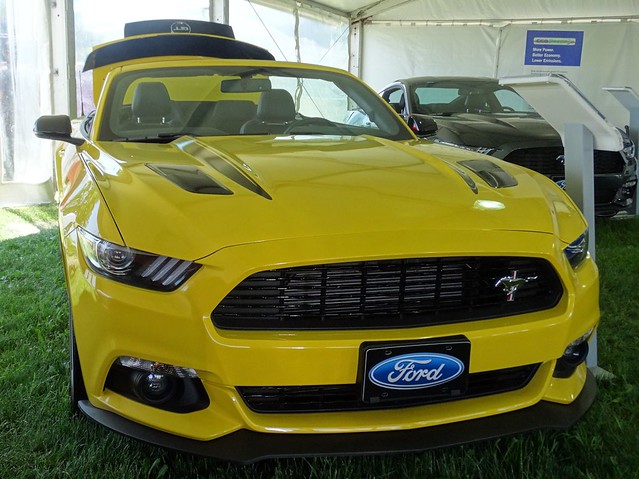 |
| Photo Credit: Chris Nagy |
The Detroit-based North American International Auto Show has always fueled an early release of potentially game-charging designs and vehicle philosophies from automakers (with American companies traditionally reserving some of their most pivotal presentations). After the course of recent history, Ford Motor Company hasn't been afraid to make some noise on the departure or arrival of a new year. In December 2013, the current generation Mustang broke cover ahead of the 2014 North American International Auto Show in Detroit while a new F-150 pickup truck debuted for that same exhibition. The following year, Ford decided to retain the suspense for the show introducing two EcoBoost-propelled, high-performance models in the form of the GT supercar and the F-150 Raptor. Ahead of the 2017 edition of the important automotive event, the blue oval has set out some remarkable new plans that includes adding electrified powertrains to some iconic Ford vehicles with the start of the next decade.
Envisioning a new stage of motoring employing electricity for moving their vehicles with greater efficiency, Ford's beloved Mustang pony car and celebrated F-150 pickup truck will be given hybrid technology. Planned for 2020, details for the two hybrid propelled variants of the Ford Mustang and Ford F-150 is light. Ford has only said that the upcoming F-150 Hybrid will feature powerful towing and payload hauling abilities while also pledging the truck can operate as a mobile generator (Similar to what was accomplished with the 2004-2007 Chevrolet Silverado and GMC Sierra hybrid truck). In the case of what can be expected from a Ford Mustang Hybrid, V-8 engine performance with strong low-end torque is promised.
Intentions of hybrid-powered Ford F-150 and Ford Mustang by 2020 is only a tip of the iceberg for what the auto company has in store for electrified driving. A fully-electric compact sport utility crossover vehicle is slated for introduction at the same time as the two before-mentioned hybrids. The unnamed electric vehicle will boast a battery capacity allowing the automobile to exceed 300 miles on a single charge. A plug-in hybrid version of the Ford Transit van will be distributed in European countries by 2019. Electrified performance is also set to become a priority for law enforcement vehicles with two hybrid choices set to be offered within the next several years.
It's remarkable to consider the depth of hybrid or electric vehicles from the current and future Ford Motor Company. Following a period where Toyota and Honda were launching multiple hybrid vehicles, Ford emerged in the late-half of the 2000s with the Escape Hybrid as well as the Fusion Hybrid (badge engineering also created the Mariner sport utility and Milan sedan under the now-defunct Mercury brand). An automaker that played a gigantic role in the destruction of the electric car during the early part of the 20th century, production of all-electric vehicles started with the limited fleet sales of the Ford Transit Connect van and later with the widely available Focus Electric.
Coinciding with specific product plans, Ford Motor Company has pledged a $700 million investment into the ongoing research of electric vehicle technology and autonomous motoring. Funding for the expanded research will be made easier following the now-cancelled plans for a new manufacturing facility in Mexico. Construction of the $1.6 billion plant in San Lius Potosi, Mexico is seen as less popular due to cost and apparent changes in political policies in the United States. While backing out on plans to build a new plant in Mexico, Ford Motor Company is still committed production south of the United States border. Production of the Ford Fusion, Lincoln MKZ is occurring at the Hermosillo Stamping and Assembly Plant while construction of Fiesta subcompacts takes place at in Cuautitlan. Ford is also committed to route production of the next generation Focus through the Hermosillo facility.
With the approach of the 2017 Detroit auto show, these new year revelations for the present and future of Ford Motor Company reveals the healthy process of innovation remaining in full force.

Comments
Post a Comment